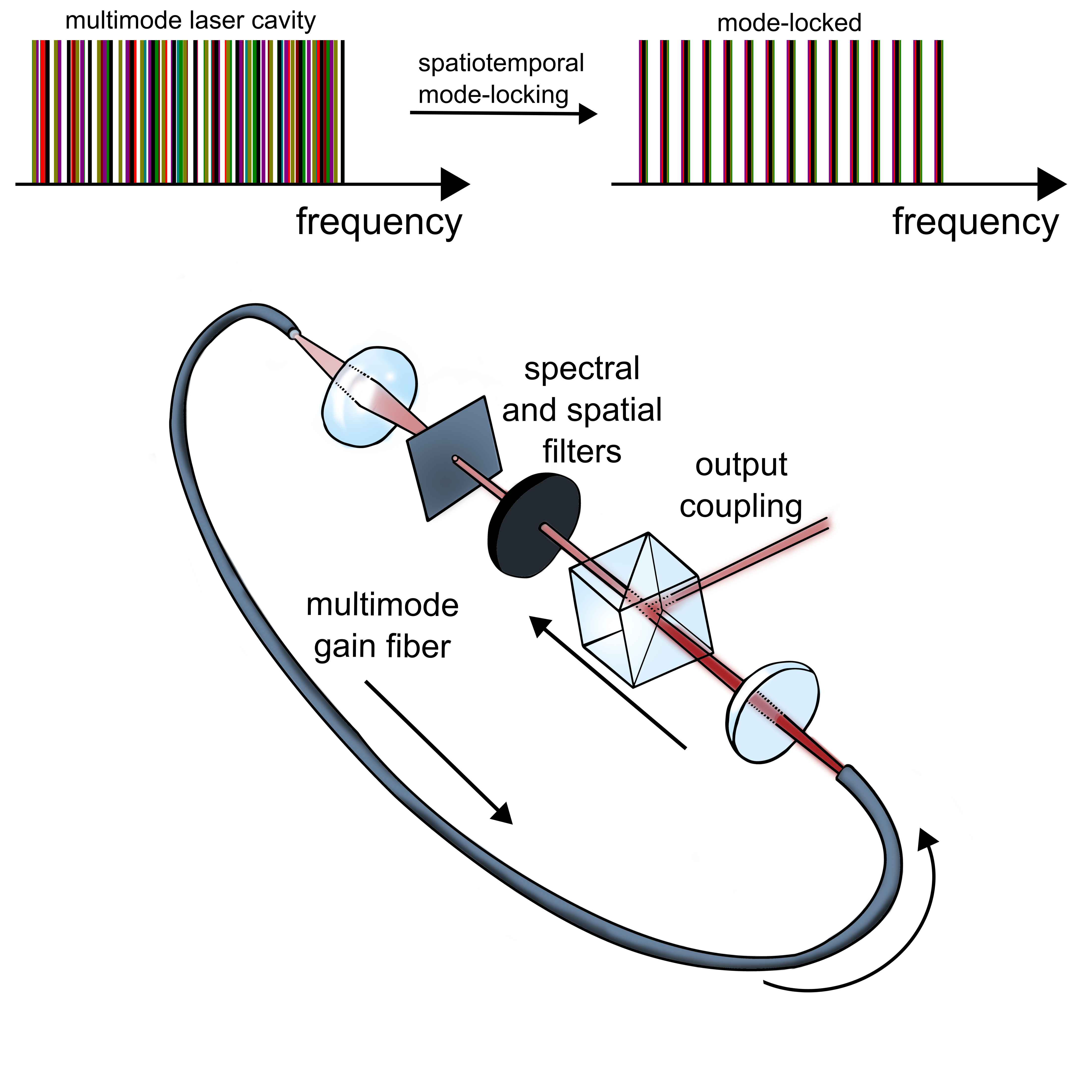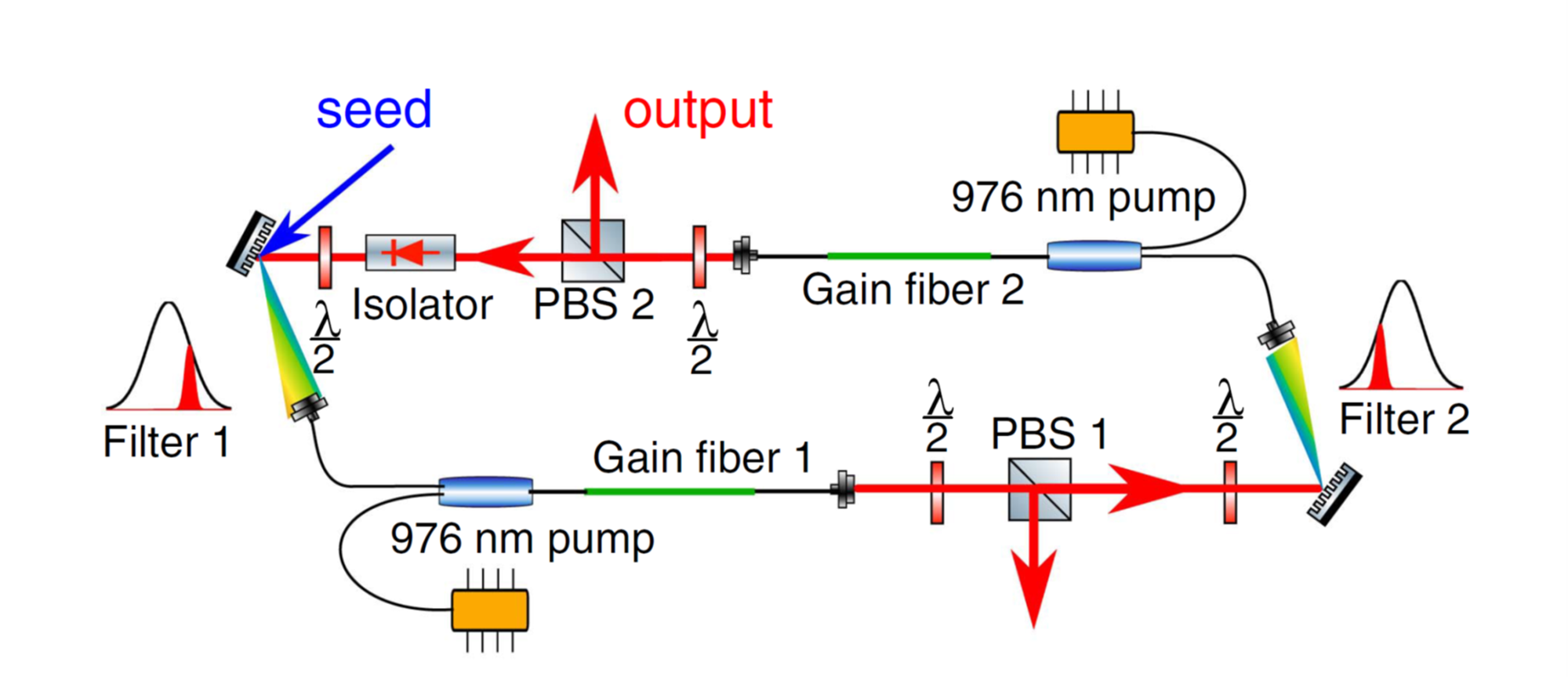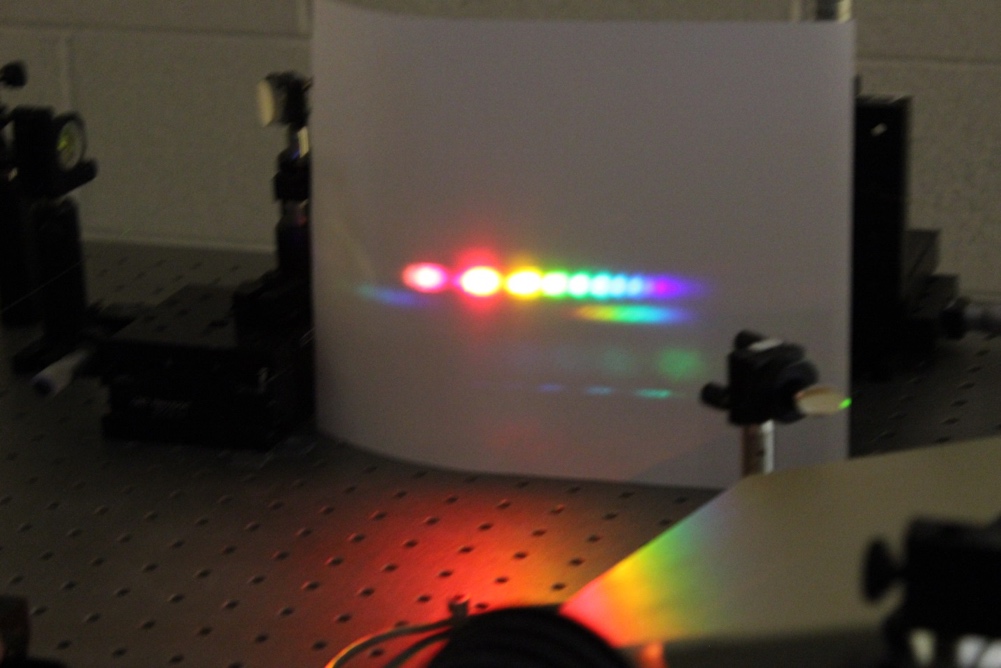Spatiotemporal mode-locking in multimode fiber lasers
Unlike a conventional single-mode, ‘one-dimensional’ laser, the frequencies of a multimode, multidimensional laser are ordinarily very complicated (figure below, top left, where different colors correspond to different spatial modes). However, we showed that, for a properly designed laser (bottom), the laser’s frequencies would adjust automatically into an organized, synchronized pattern (figure top right), corresponding to the emission of a 3D, multimode laser pulse at regular intervals. Pulses from this laser might eventually allow very sophisticated light-matter interactions, especially with complex molecules (different modes of the laser may interact with different ‘modes’, specific transitions, of molecules or other matter). We have some moderately crazy ideas to realize PW or even EW (exawatt) lasers with this approach.





